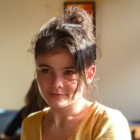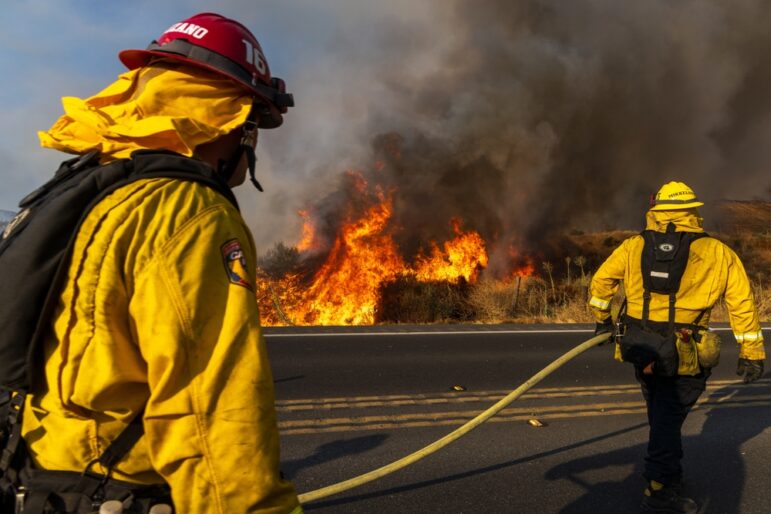

How a Canadian Reporting Lab Is Pioneering Academic-Journalist Collaboration
Reporters tend to reach out to academics for a quote or two to give broader context to their reporting, or to bring some rigor to their journalistic findings. Whether it’s explaining the latest subatomic particle discovery or checking our math when we’re following the money to expose offshore schemes, academic experts provide a seal of approval that our analysis is on-point. Our reporting, in turn, connects their expertise with the wider public audience that media publications have.
But what if a scholar was brought into the newsroom from the start, deputized with a virtual press pass, and given equal editorial say in an investigation?
This is precisely what Toronto Star reporter Rob Cribb and University of Sheffield professor Genevieve LeBaron did, with a 10-month investigation about the impact of the COVID-19 pandemic on the rights of garment workers around the world.
The three-part, front-page newspaper series, along with a peer-reviewed academic study, features garment workers from India to Ethiopia who have faced increasing financial and safety barriers as a result of supply chain disruptions during COVID-19. Stories of workplace violence, job loss, and sexual assault reported by Cribb came from the 1140 surveys done by LeBaron and fellow researchers in four different countries. The collaboration was an attempt to not only reveal working conditions in these factories but also to highlight the relationship between companies receiving COVID-19 relief funds and the conditions of the garment workers who make their products and lack an economic safety net. It’s the kind of reporting that wouldn’t have been possible without joining the forces of academia and journalism.
Sheffield’s survey was the product of a collaboration with a labor rights organization and two research centers. Together they created a primary dataset to identify the countries, workers, and industry actors needed to complete a representative survey.
Journalism stories emerged from the surveys. Interviewees who spoke with Sheffield’s team could opt-in for an interview with Cribb, who would ask the questions that journalists need answered in order to tell a story. Here are some snapshots of what Cribb reported by talking to willing survey respondents and researchers:
- Researchers estimate that pandemic-related order cancellations triggered wage losses ranging from roughly $4.9 to $7.3 billion for garment workers worldwide.
- Of the 145 surveyed workers who had their contracts terminated since the pandemic, nearly 80 percent say they have not received the full severance they were owed. More than two-thirds received nothing.
- An Ethiopian woman in her 20s said she watched colleagues being hit, slapped, or pushed by a manager. “We make our complaints but no one listens or tries to help.”
- Ramesh, a garment worker in India in his 40s — who began working at age 12 — says his income plummeted because of the pandemic. “It’s very difficult to run the house with the money I’m earning” without assistance from the government, says the father of three. “I’ve not paid school fees for this year for my children.”
- A garment worker in Ethiopia is paid a base salary of 25 Birr — roughly $0.57 USD. If she meets the factory’s production target of 1,400 T-shirts per day, per worker, she gets an additional 7 Birr bonus — $0.16. On her most profitable day at work, she takes home $0.82 USD. Most days she receives just $0.73.
The partnership is funded by the Global Reporting Centre (GRC), a nonprofit journalism organization based out of the University of British Columbia, which facilitates collaboration between academics and journalists on investigative stories.
Peter Klein, founder and executive director of the GRC, says that evolving the way journalists interact with academics is one step towards better journalism.
“We’ve brought the journalist and the scholar into the newsroom as equal partners, from day one,” Klein explains. “They are able to work in a more intimate way, communicate with each other what the measures of success are, what the methods might be, what outputs might be.”
Fundamentally, journalists and scholars do similar work – diving into documents, crunching numbers, conducting interviews. But their timeframes, and their measures of success, can be quite different. The GRC tries to bridge that gap, both by funding such collaborations and serving as an ambassador between two very different cultures.
Here are a few reasons why this garment supply chain story was a successful collaboration from the perspectives of the scholar and journalist pair, Genevieve LeBaron and Rob Cribb:
Expanded research depth and breadth: In-depth academic research with tangential information gathering from journalists connects the abstract scholarly work with the everyday people unknowingly affected by the issue.
- LeBaron: “I think it will be different from standard media coverage in the sense that these are really rich stories that kind of capture a lot of the key parts of the research, as opposed to just somebody lifting the headline of the report and (something) about the report.”
- Cribb: “It makes sense in service of the story to widen the net brainpower. [We have] greater access to data and new perspectives and lenses on the issue that we’re writing about.”
Ethical collaboration: Both journalists and academics are bound by institutional and editorial ethical frameworks, allowing for better reporting.
- LeBaron: “Because we were able to build Rob into our (academic ethics review application), we got approval [for] when we interviewed workers, to ask them whether they would be comfortable being contacted by a journalist that we were working with… We already had people in-country who do worker’s rights work and so there was no travel needed.”
- Cribb: “Each of us, of course, had independent control over what we produced, even though it’s largely drawn from the same basic information and data. We did our interviews independently. We sought out financial angles and government accountability angles on the journalistic side, that were not a focus for the academics.”
Increased knowledge resources: Academics can advise on the scope and direction of reporting and share valuable data from the get-go that would be expensive and time-consuming for journalists to collect independently. Journalists know how to tell high-impact stories that can be catalysts for change.
- LeBaron: “My hope is that by telling these stories in a way that’s really infused with life… that it will yield a greater response from some of the people who need to act to resolve the economic hardship for the workers in the study, which is governments and companies.”
- Cribb: “The academics focused on a survey of workers in poor countries around the world, that we (the reporters) could have never pulled off – because we wouldn’t have the resources and the contacts on the ground in these countries to do that. So it really is a pooling of information from two distinct perspectives, written in two distinct ways, which then ultimately benefits from the synergies on both sides.”
For LeBaron, the goal was for the Toronto Star stories to allow for greater impact and reach of her research findings. Cribb’s stories presented some of the workers’ voices and shared their stories with a broader audience. LeBaron hopes telling these stories in a more compelling way will make those in charge of garment supply chains take notice and be more accountable.
Finding sources in countries where your publication doesn’t have a correspondent or local reporting partner is challenging to say the least. For Cribb, working with Sheffield gave his team access to sources that he says they wouldn’t have gotten otherwise, especially in the era of COVID-19 lockdowns and travel restrictions.
Learning how investigations happen on the journalist side opened up possibilities and opportunities for LeBaron. She said she would bring on a journalist even earlier next time since the research process is complementary and interlocking. Meanwhile, Cribb said he has an ever-increasing appreciation for what academics can bring to journalistic reporting. “I think it’s a huge benefit and a model that is going to become increasingly popular,” he said.
Klein says that facilitating these collaborations doesn’t have to be a costly experiment. In fact, there’s untapped potential in forming partnerships between universities and newsrooms in cities and communities to strengthen local news.
Some ways academics can find journalists to partner with include going to journalism conferences to meet reporters whose beats overlap with their areas of study, collaborating with journalism school graduate students, and reaching out to desk editors at smaller publications.
For journalists seeking academic partners, Klein suggests using open-source tools like Google Scholar to find prominent scholars that research what the journalist is investigating, looking for op-eds written by academics, and attending academic conferences.
“It’s not uncommon for two journalists to work together, it’s not uncommon for two scholars to work together,” Klein said. “So why should it be uncommon for a journalist and a scholar to collaborate on a reporting project?”
Additional Resources
New Models: How Academics, Nonprofit News, and Government are Collaborating
How Forensic Architecture Supports Journalists with Complex Investigative Techniques
A Program That Turns Doctors into Muckrakers
Katarina Sabados is a Vancouver-based journalist with an investigative reporting background. Previously an OCCRP researcher, she’s currently covering climate issues at Canada’s National Observer and reporting on supply chains at the Global Reporting Centre.










